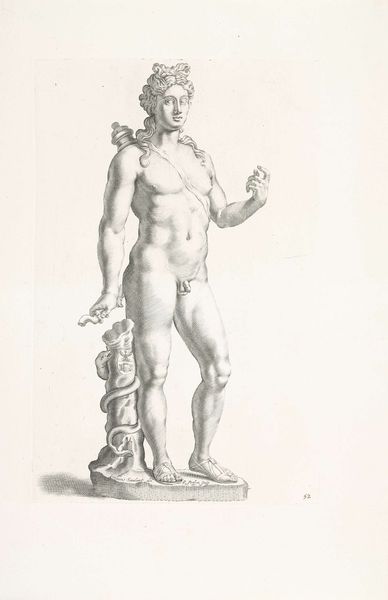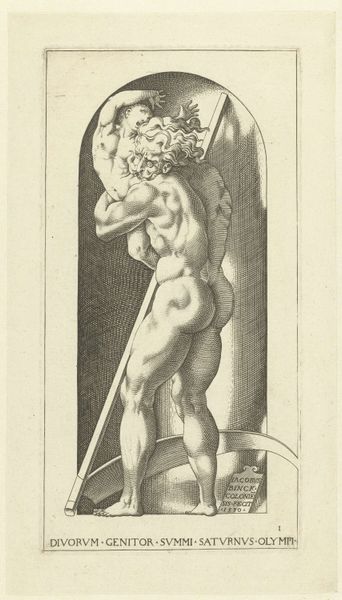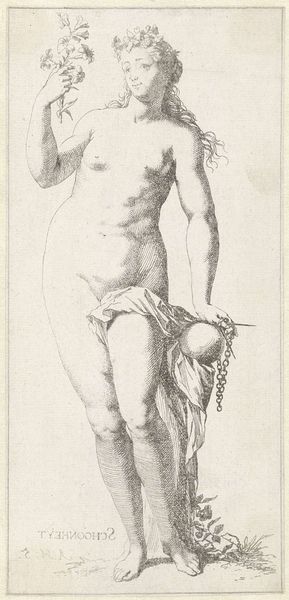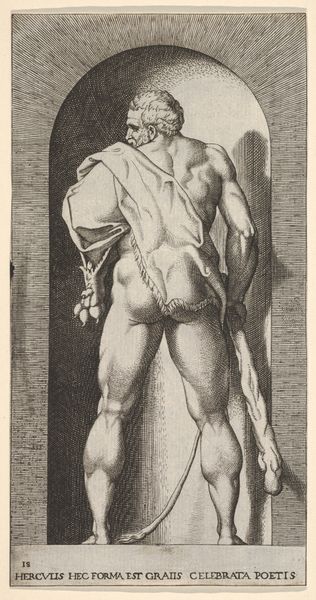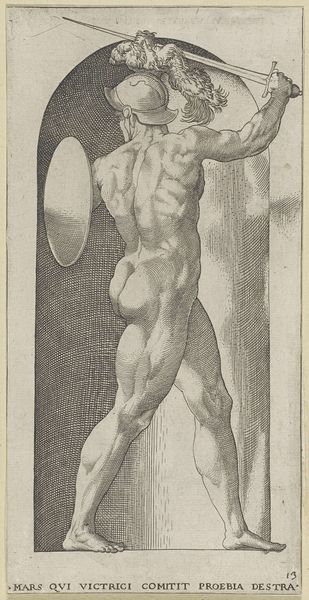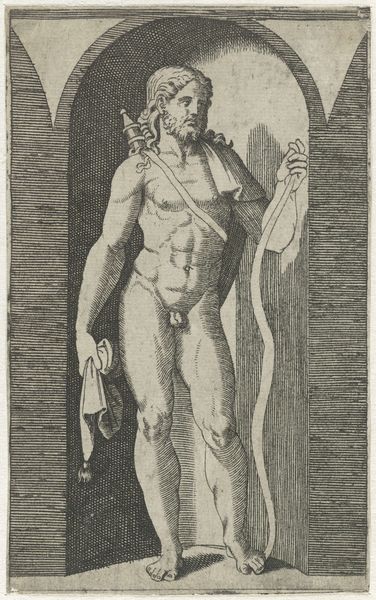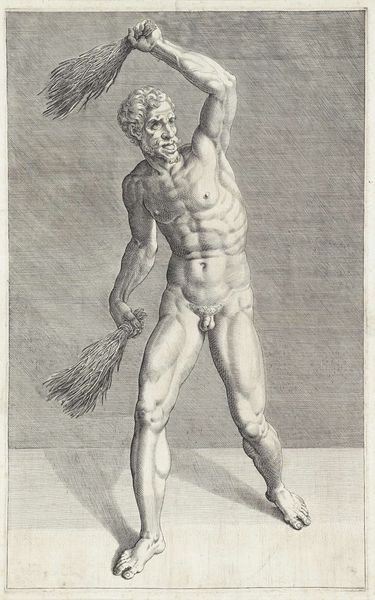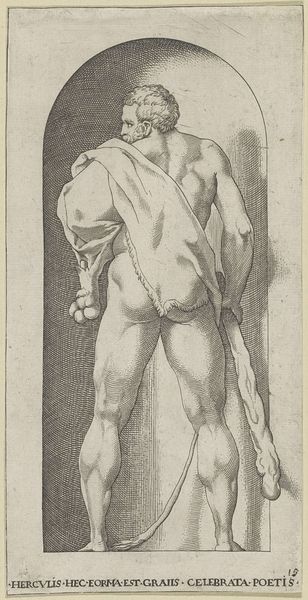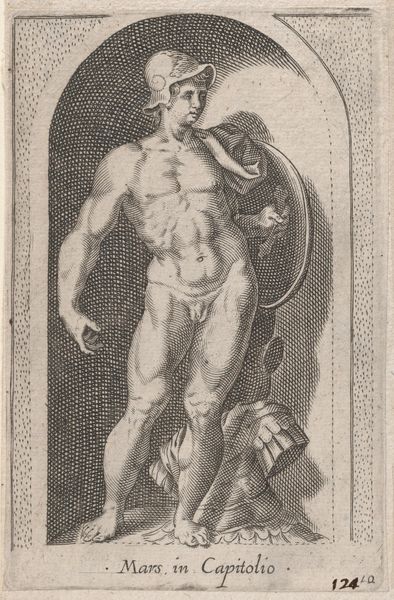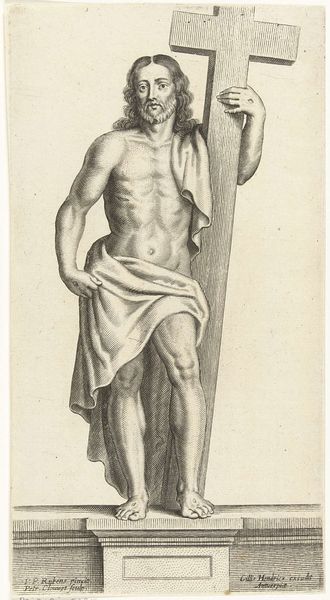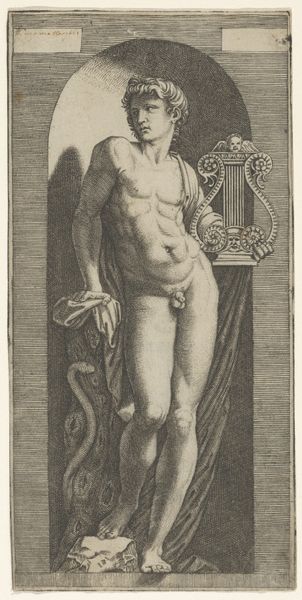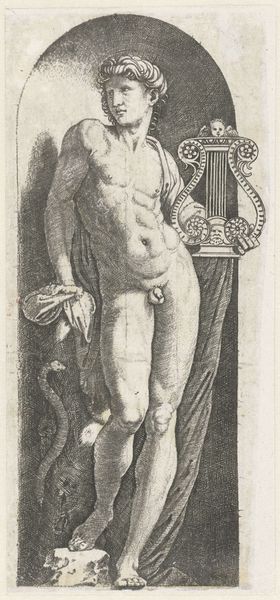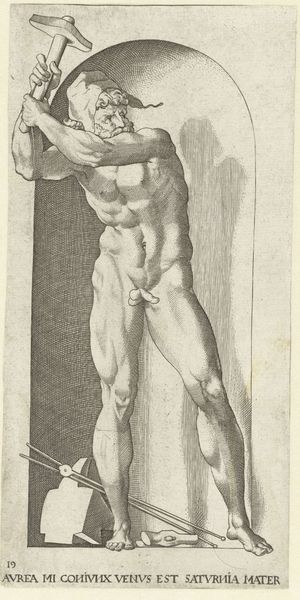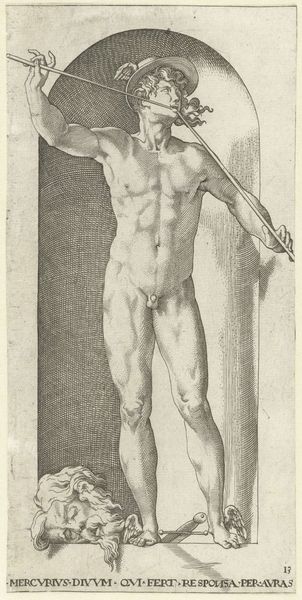
Dimensions: height 222 mm, width 112 mm
Copyright: Rijks Museum: Open Domain
Jan de Bisschop created this print of the Apollo Belvedere in the 17th century, using etching, a printmaking technique where acid is used to corrode the unprotected parts of a metal surface to create a design. The matrix was a copper plate. Think of the labor involved: the careful preparation of the plate, the drawing through a protective ground, the biting of the lines with acid, and finally the printing process itself. De Bisschop was not just replicating an image; he was interpreting a celebrated classical sculpture through the skilled application of line. Notice how the etched lines vary in thickness and density, creating areas of light and shadow that define Apollo's muscular form. The process allows for a remarkable level of detail, from the curls of Apollo's hair to the texture of the drapery. Printmaking at this time was not just about art, it was about communication, the reproduction and dissemination of knowledge and aesthetics. By understanding the materials and processes involved, we can appreciate not only the image itself but also its role in a wider cultural landscape.
Comments
No comments
Be the first to comment and join the conversation on the ultimate creative platform.
